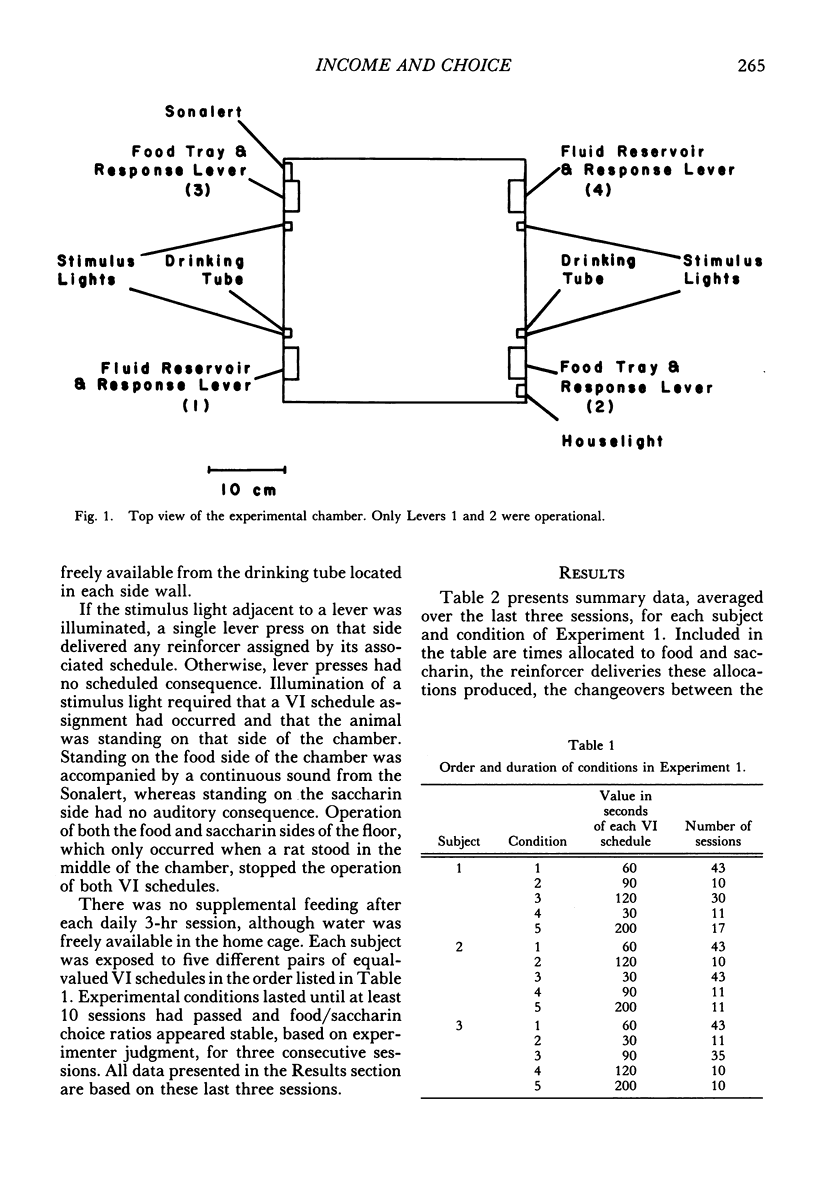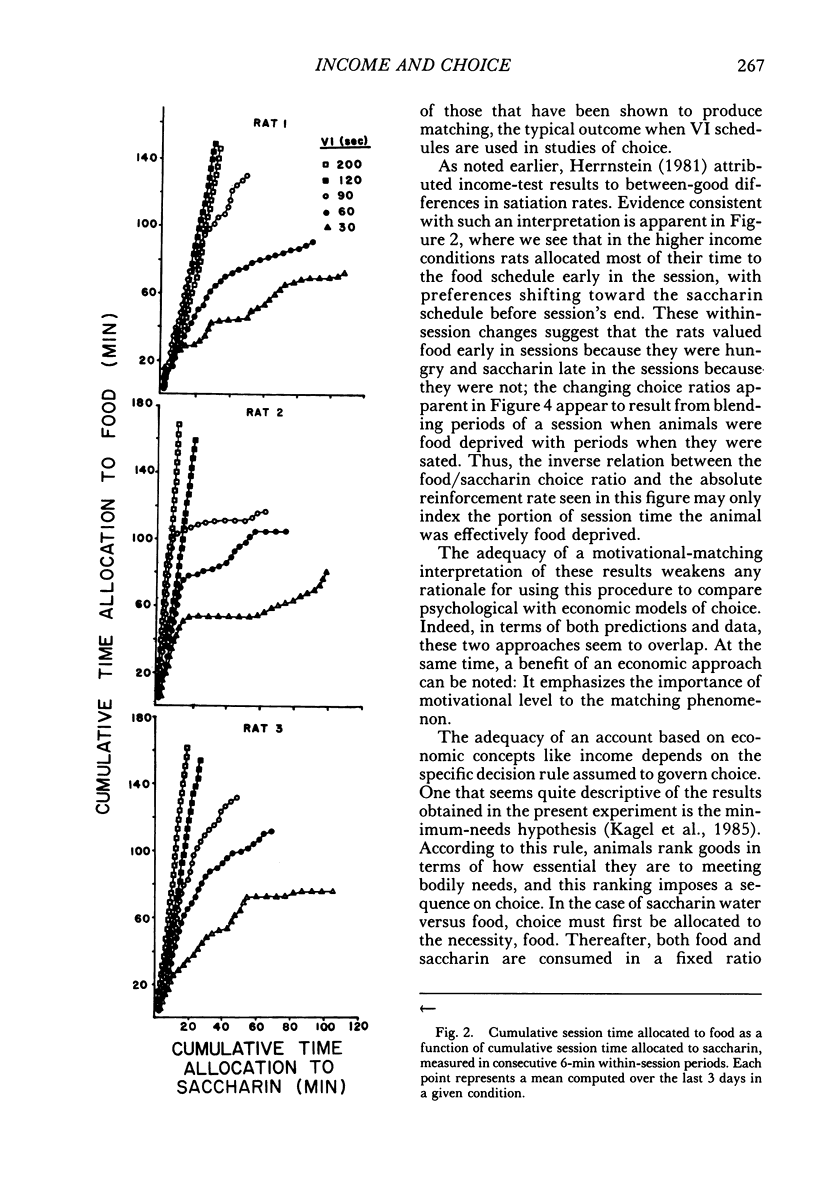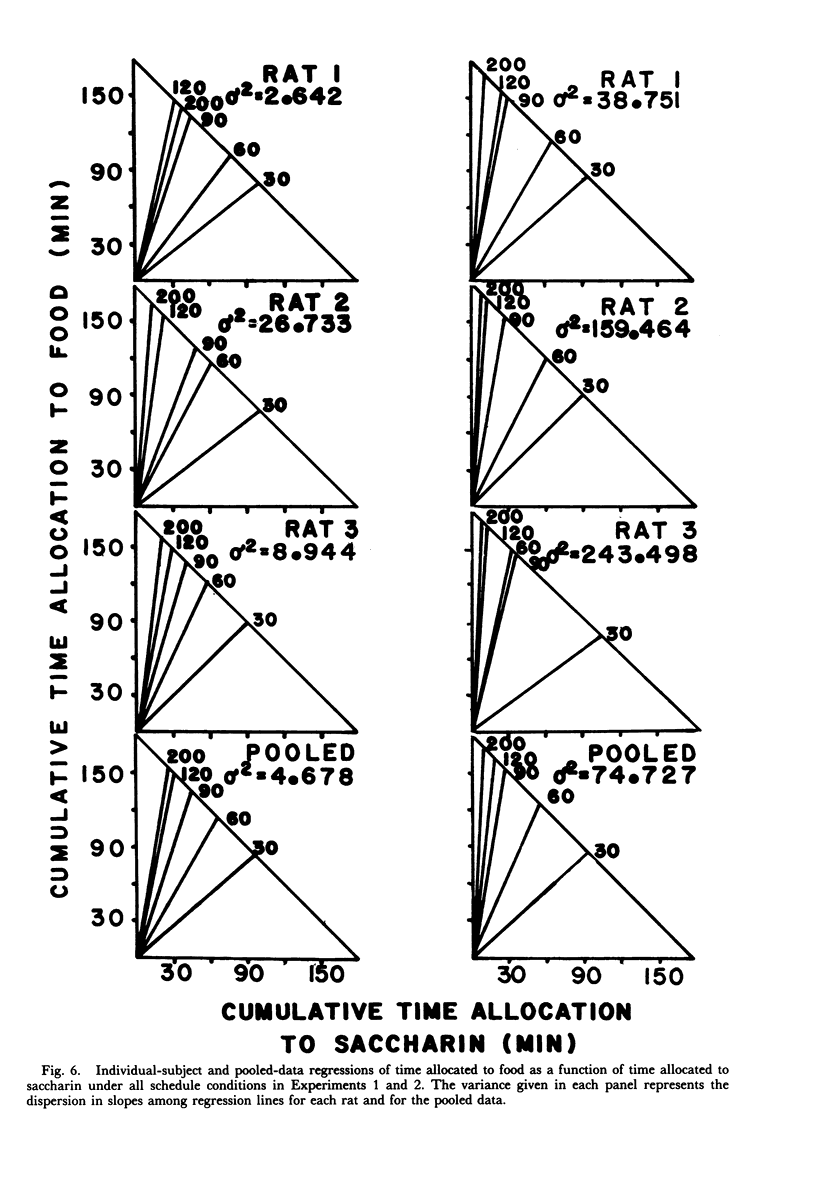Abstract
In Experiment 1, 3 rats chose between two simultaneously operating variable-interval schedules, one of which provided saccharin water and the other, food. In five conditions, the absolute (and equal) reinforcement rates provided by the pair of equal-valued schedules were manipulated in the range of 36 to 240 per hour. Experiment 2 was identical to Experiment 1 except that these schedules operated successively, arranged by requiring the rat to stand on the side of the chamber correlated with each schedule. Food/saccharin choice ratios were inversely related to reinforcement rate in both experiments, although this effect was stronger in Experiment 2. When delivery rates were high, preference for food over saccharin often reversed as the session progressed. The results were interpretable in terms of economic accounts of choice (e.g., the minimum-needs hypothesis), as well as in terms of traditional psychological accounts (e.g., matching theory).
Keywords: matching law, choice, variable-interval schedules, eating, rats
Full text
PDF












Selected References
These references are in PubMed. This may not be the complete list of references from this article.
- Elsmore T. F., Fletcher G. V., Conrad D. G., Sodetz F. J. Reduction of heroin intake in baboons by an economic constraint. Pharmacol Biochem Behav. 1980 Nov;13(5):729–731. doi: 10.1016/0091-3057(80)90018-0. [DOI] [PubMed] [Google Scholar]
- FLESHLER M., HOFFMAN H. S. A progression for generating variable-interval schedules. J Exp Anal Behav. 1962 Oct;5:529–530. doi: 10.1901/jeab.1962.5-529. [DOI] [PMC free article] [PubMed] [Google Scholar]
- Findley J. D. Preference and Switching under Concurrent Scheduling. J Exp Anal Behav. 1958 Apr;1(2):123–144. doi: 10.1901/jeab.1958.1-123. [DOI] [PMC free article] [PubMed] [Google Scholar]
- HERRNSTEIN R. J. Relative and absolute strength of response as a function of frequency of reinforcement. J Exp Anal Behav. 1961 Jul;4:267–272. doi: 10.1901/jeab.1961.4-267. [DOI] [PMC free article] [PubMed] [Google Scholar]
- Herrnstein R. J. On the law of effect. J Exp Anal Behav. 1970 Mar;13(2):243–266. doi: 10.1901/jeab.1970.13-243. [DOI] [PMC free article] [PubMed] [Google Scholar]
- Hursh S. R., Natelson B. H. Electrical brain stimulation and food reinforcement dissociated by demand elasticity. Physiol Behav. 1981 Mar;26(3):509–515. doi: 10.1016/0031-9384(81)90180-3. [DOI] [PubMed] [Google Scholar]


